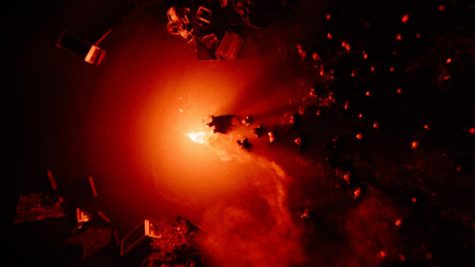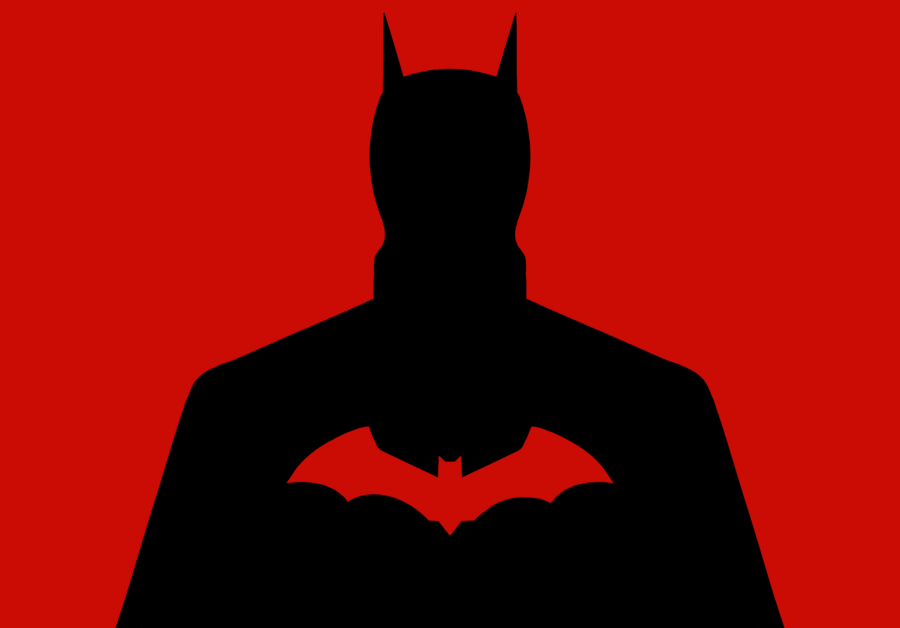‘The Batman’ Review (Mild Spoilers)
With a sequel confirmed, the 2022 film warrants the reboot for the Caped Crusader
The premise of “The Batman” is a simple one, that spirals into a web of interconnected parts that span miles and years of Gotham.
From the cinematography, musical score, and character development, to storytelling, performances, and setting: “The Batman” (2022) is a masterful piece of cinema, and director Matt Reeves has created an opus of a film that has redefined the superhero-film-archetype. “The Batman” isn’t a superhero movie, but rather a movie with a superhero in it.
DC Films has had a history of releasing subpar superhero intended-blockbusters, but have been recently subverting this tradition with the studio’s recent releases such as “Bird of Prey,” and “The Suicide Squad.” Following these two critically-acclaimed DC installations, there was significant hype surrounding the release of this movie once teasers started dropping. To ensure a theatrical release, the movie was delayed for almost an entire year before it was finally made available to audiences. Audiences’ anticipation and a theater release led to the film grossing $254 million worldwide during its first weekend. And amid all of these expectations, “The Batman” managed to feel as though it was ripped off the pages of a classic comic, mixed with a healthy dose of “film noir” elements.
The city of Gotham has been reimagined multitudes of times in film, most notably by Tim Burton, Christopher Nolan, and Zach Snyder. But Reeves’s Gotham feels the darkest and grittiest we’ve seen yet. The aesthetics and atmosphere of desolation lurks in every corner. Gotham is also riddled with the same issues that plague other large metropolises, such as lawless crime dynasties, drug crises, corrupt city officials, failed promises from politicians, and of course, crime.
After a brutal opening scene, the scope broadens to show us other crimes committed in the depth of the night. In each sequence, an assailant looks into the endless night, and we expect to see someone (maybe Batman) emerge from it. But instead, it is just an extended shot of darkness. Robert Pattinson’s first appearance is through voiceover, when explains that his Batman is everywhere, in all of the shadows, watching the sins of the city. After we watch several of these crimes such as robbery, vandalism, and mugging, Bruce Wayne finally intervenes, emerging from the shadows in a hulking black Batman suit. After audiences are left to process the shadowy reality of Gotham, the costumed vigilante seems almost comical in his pointy bat ears— that is, until he starts battering the criminals.
The premise of “The Batman” is a simple one, that spirals into a web of interconnected parts that span miles and years of Gotham. A masked serial killer (The Riddler, portrayed by Paul Dano) is murdering Gotham’s leaders and exposing their corrupt secrets. At each crime scene, the Riddler, leaves a cynical note addressed to the Batman as well as a smattering of clues hinting towards the full picture. The clues and mystery elements of the film are fleshed out and generate a well-thought-out plot that keeps audiences engaged as they solve the mystery along with the Caped Crusader. As the story unfolds, we explore the morality of the Batman’s service of “the greater good” and that theme plays into the climax of the movie. It isn’t until we explore these moral dilemmas, that we uncover the complex “why” of the main villain.
To solve the crimes, Wayne teams up with police lieutenant James Gordon (portrayed by Jeffery Wright) and solo-vigilante Selina Kyle (portrayed by Zoë Kravitz) to navigate the mind-bending clues that the Riddler leaves behind upon each victim’s death. Performances from all of the characters are poignant and believable, but Pattinson’s and Dano’s stand out among the stacked cast. Pattinson nails broody and single-minded with his stoic silences that speak more than the dialogue at many points in the movie. In the batsuit, he is daunting whether he’s in the apex of an action scene or working out a clue with that big bat brain. Dano’s unsettling candance of speaking matches the unhinged killing spree his character goes on across Gotham city. He brings fear and uncertainty to the character of “The Riddler” and delivers a compelling comic book villain performance.
The artistic elements of “The Batman” add flair and interest to the otherwise base mystery plot. The color grading of the movie utilizes inky blacks, drastic contrast, purposeful usage of light, and pops of color that set the scene in the most visually-satisfying ways. Almost the entire movie takes place in low-light situations, but there are still variations and interesting lighting situations that set the tone of the film.

One notable shot from the movie is an overhead aerial look at Batman leading a group of people in darkness while he holds a red flare. The scene is haunting and the striking red light casts a harsh glow on the scene that places Wayne at the center of it all.
The 2022 film’s score, by composer Michael Giacchino (Rogue One, Up), makes the film. Though the Bat’s theme song had strong influences from the Imperial March from Star Wars, it was still haunting and powerful. Without the score, the movie wouldn’t have the same impact or ambiance. The intended use of film noir-esque “drones of dread” add to the desaturated and desolate suspense as the mystery builds.
Another masterful use of art within “The Batman” is the Ave Maria motif. The movie opens with a choir rendition of the song, and an instrumental of the song is used in pieces throughout the movie. The Riddler even performs a quick deranged cover of his own, during the tail end of the movie. “Ave Maria” is a song that is traditionally played during funerals, and the title literally translates to “Hail Mary.” This metaphor adds further implication to the Batman’s why— his vigilantism is a final desperate attempt (a hail mary) to fix Gotham and heal it.
Despite the film’s successes as a piece of cinema, “The Batman” still had some downfalls that pulled me out of the self-contained world of Gotham. I definitely found myself checking my watch a couple times even though I was entertained— the three hour length is still a lot to get through. The plot was also a little hard to follow at points and if you look away for 30 seconds, you might find yourself completely lost as to what’s happening. Audiences need a certain level of dedication when watching the movie.
By 2022, Batman has been brought to the big-screen with nine live-action films (not including the awesome Lego movies) and he’s had plenty of television series. So in 2022, did we need a new Batman?
Reeves and Pattinson have proved that we did in fact need this darker interpretation of the masked vigilante.


